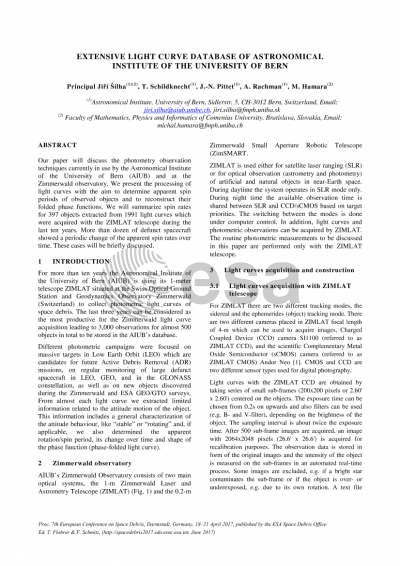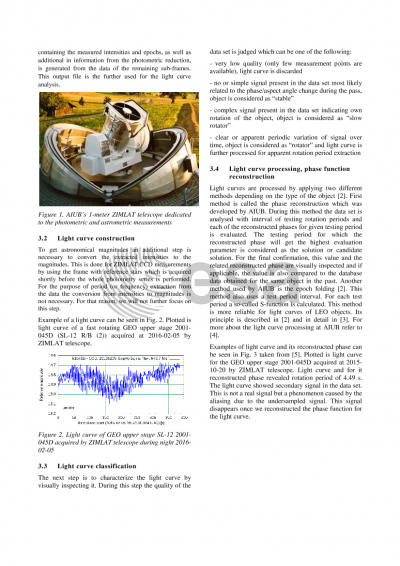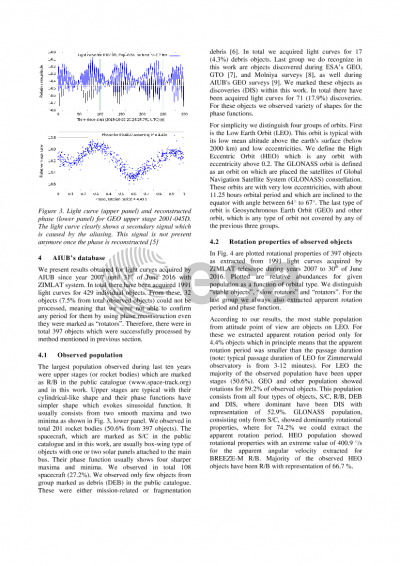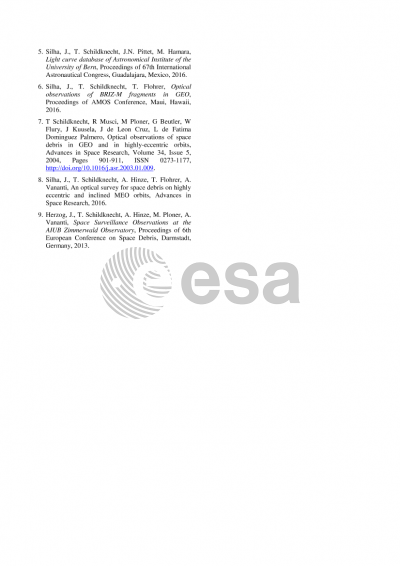Document details

Abstract
For more than ten years the Astronomical Institute of the University of Bern (AIUB) is using its 1-meter telescope ZIMLAT situated at the Swiss Optical Ground Station and Geodynamics Observatory Zimmerwald (Switzerland) to collect photometric light curves of space debris objects including defunct spacecraft, upper stages and fragments. The last three years, 2014, 2015 and 2016, can be considered as the most productive for the Zimmerwald light curve project, thanks to the AIUB catalogue of light curves currently contains more than 3,000 observations for several hundred individual objects.
Different photometric campaigns focused on massive targets in Low Earth Orbit (LEO) which are candidates for future Active Debris Removal (ADR) missions, on regular monitoring of large defunct spacecraft in LEO, GEO, in the GLONASS constellation, as well as on new objects discovered during the Zimmerwald and ESA GEO/GTO surveys. From each light curve we extracted limited information about the attitude motion of the object. This information includes a general characterization of the attitude behaviour, like “stable” or “spinning”, and, if applicable, also the determination of the apparent spin period, shape of the phase-folded light curves and the change of the apparent spin period over time.
Our paper will discuss the photometry observation techniques currently in use at the Zimmerwald observatory and the processing of the light curves with the aim to determine apparent spin periods and to reconstruct their phase-folded light curves. Spin rates for objects acquired with the ZIMLAT telescope during the last ten years will be discussed, their spin properties as a function of the orbital region and object type will be summarized and the morphology of the reconstructed phases will be presented. More than dozen of defunct spacecraft showed a periodic change of the apparent spin rates over time. These cases will be discussed, as well.
Preview






